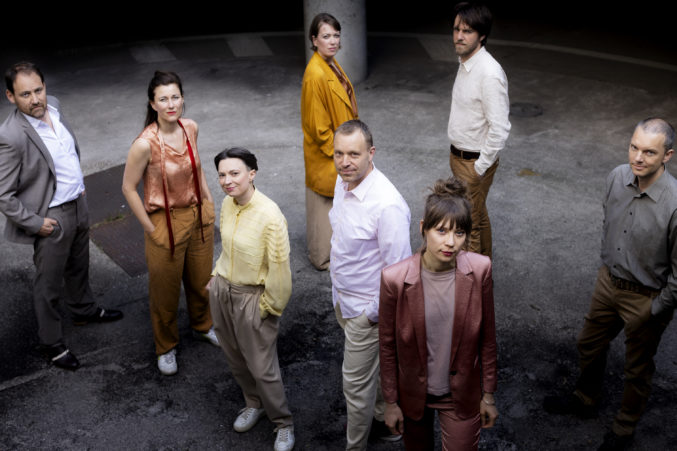
A-RONNE
HYOID
Description
Theater of the ear: live performance with headphones, for 8 voices a cappella and electronics.
Luciano Berio wrote two versions of ‘A-Ronne’. The first for five actors and the second for 8 voices. Joris Lacoste offers a new version of the latter in a contemporary and electronic listening format.
Conceived as a kind of musical documentary about a poem by Edoardo Sanguineti, this piece of music mixes fragments and allusions to numerous other texts: translations of the Bible, Dante’s ‘Divina Commedia’, Goethe’s ‘Faust’, Karl Marx’s ‘The Communist Manifesto’ and Friedrich Engels, and pieces of text by Roland Barthes.
A theater of the ear
In this new stage version, Joris Lacoste fully brings to the fore what Berio called a ‘theater of the ear’ and which he defined as a type of performance in which theatricality is internally generated through vocal expression. In the words of Joris Lacoste: “There are no characters as such, let alone a plot or argument. The sentences themselves, the words and the voices, all amplified, are the real protagonists of the piece. The language(s) is the whole story, from A to Z (Z = ‘Ronne ‘). It is theater of the mind.”
Live version with electronics and headphones, exploring different listening modes
Equipped with wireless headphones, the spectator hears a version of ‘A-Ronne’, supplemented by an electroacoustic prologue composed by Sébastien Roux. “This piece, lasting 20 minutes, places the spectator in a radio-like listening situation that ultimately leads him, almost by chance, to a live rebroadcast of Berio’s piece, exploring the ambiguities between voice and electronics, amplified voices or voices that resounding in the room, voices playing in the headphones or ‘leaking’ through the headphones.” (Joris Lacoste)
Unconventional performance locations
“The performance is not intended for traditional theaters, but rather for large spaces such as empty warehouses or underground parking garages: listening through headphones allows large distances between audience and singers, but also between the singers themselves. The idea is to investigate the difference between what is heard (the same for everyone) and what is seen (depending on the movements of each person). The mobility of the singers and the conductor will allow to play choreographic games of appearing, disappearing, coming together and breaking up, all in function from Berio’s score.” (Joris Lacoste)
